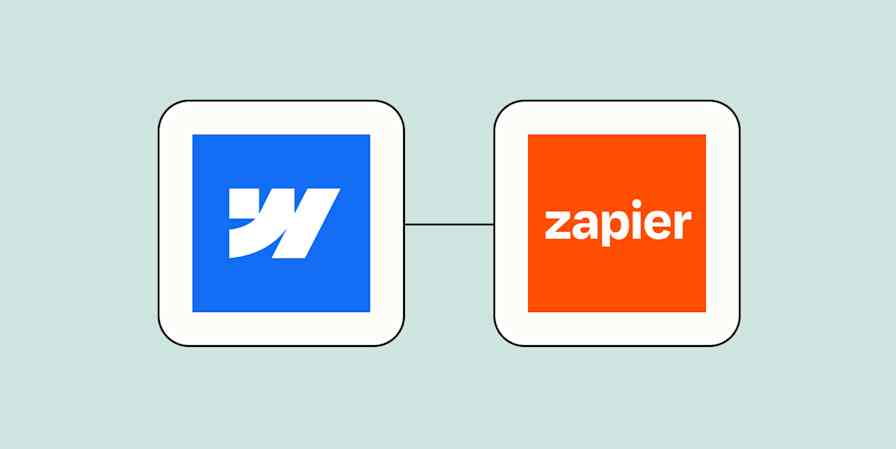Among the many methods of marketers today, the written case study remains a tried and true practice to attract new customers.
"B2B small business marketers say case studies and in-person events are the most effective tactics they use," the Content Marketing Institute reported in its most recent B2B Small Business Content Marketing report.
On the other side of the equation, evidence shows that buyers are still looking to case studies, too. The marketing tactic ranks as the third-highest type of content influencer for purchasers at small business and large enterprises alike, according to Eccolo Media's 2014 B2B Technology Content Survey Report.
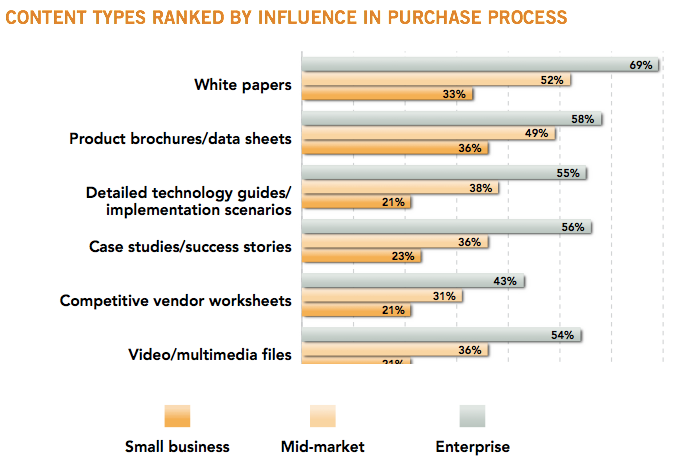
Eccolo Media, which surveyed more than 500 tech purchasing decision makers and influencers for its seventh annual report, found only product brochures/data sheets and whitepapers to rise above the influence of the case study. Fifty-six percent of enterprise-level purchasers and 23 percent of small business owners said case studies influenced a technology purchase of theirs in the past six months.
Moreover, the report concluded that in general, buyers overwhelmingly prefer traditional written case studies to those presented as audio, video, one-page summaries or Microsoft PowerPoint slides.
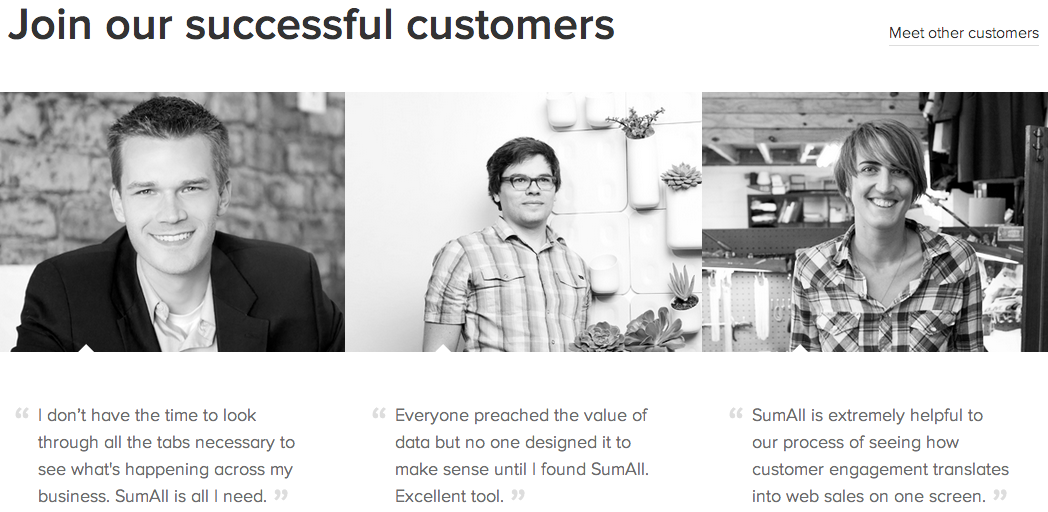
Need more convincing of the power of written case studies? Think back to the last time you made a purchasing decision of a new tool at work. Did the story of how one of their customers, either told with a few lines of copy on the homepage or as a 500-plus word piece of content elsewhere, influence you? That kind of story influences my teammates and me, and its for that reason and stats like those above that at Zapier this year—our third in business—we've made publishing case studies a priority.
Turning to case study experts
We launched our library of over a dozen Zapier case studies last week, following months of work gathering customer stories, asking for KPIs (key performance indicators) and editing what could've made for 1,000-plus blog posts down to something scannable in less than a minute. But our work doesn't stop here. What we released will be tested, tweaked and improved upon in the coming months. Getting it out to the public was priority No. 1.
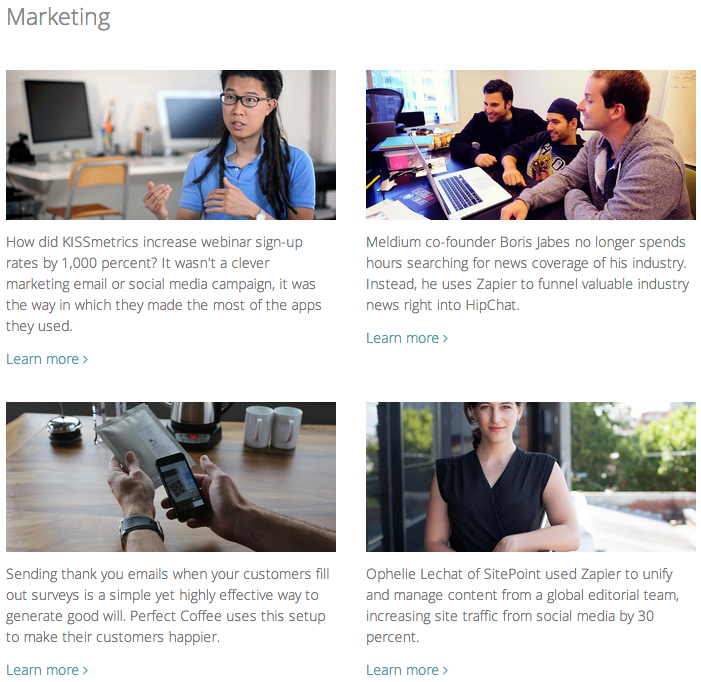
On top of tracking clicks, watching sign-up rates and asking for customer feedback, we're taking a deep dive in the many ways in which we can improve upon what we've published. To do so, I've put myself in charge of collecting tactics, proven practices and lessons learned from expert case study writers, such as authors Casey Hibbard and Steve Slaunwhite, and best in the business content marketing companies, like HubSpot and Kissmetrics.
Here are 25 effective tactics, grouped by three common sections of a case study—the customer, the solution and the benefits—plus perspectives on formatting and marketing this type of content.
The format
1. Select a length that works for you
Some marketers say a shorter case study is better, others proclaim the benefits of long-form content. Consultant and blogger Debbie Weil writes that a reasonable word count is 500 words.
"If your readers can’t skim quickly to get the gist, you’re wasting your efforts," she said in her WordBiz Report.
On the other side, Kissmetrics co-founder Neil Patel has helped herald the success of long-form content for marketing. In 2012, he found that longer copy on his homepage yielded him a higher conversion rate and longer blog posts earned him more social shares. He backed up his encouragement by noting a Moz study that showed higher search rankings for long-form content, too.
Though what's best for you is really what you find resonates with your customers.
"All (lengths) are great, as long as you're telling the story you want to tell and your leads are getting the information they need," marketer Lauren Sorenson writes on the HubSpot blog.
2. Tell a story
Marketer Drew McLellan calls case studies the marketing version of Aesop's Fables, they're stories that are told to make a point or teach a lesson about the value of your product.
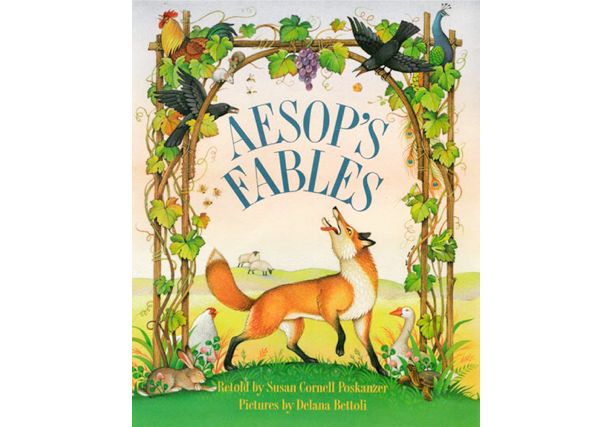
"Make sure there’s a logical flow," he writes on his blog. "Explain the problem (identify the villain). Introduce your company/product (bring in the hero). Describe how the challenge was overcome (tell of the battle). Sum it up (give it a happy ending)."
Similarly, marketer Sid Smith compares the case study format to the "hero’s journey" as defined by mythologist Joseph Campbell. Smith summarizes:
- Hero suffers a loss or experiences a serious problem… - Hero attempts to resolve issues through usual means, and fails… - Hero goes on a journey and discovers an ally or new approach… - Hero overcomes tremendous odds to resolve the problem… - Hero returns triumphant and tells all about his conquest.
"A case study IS a hero’s journey," Smith writes, "and if we see it that way we can apply the same story and copy-writing principles to make the case study something that 'sticks' in the mind and heart of the reader—VERY much like a good hero’s journey story."
On the The National Center for the Middle Market site, journalist Erik Sherman laid out what he sees as the "fairly strict formula" for a case study:
- Statement and explanation of the business problem, including key metrics - Turning point and introduction of key tools to solve the problem - Development and deployment of the solution - Results, including key metrics
"The reason it works is that it has the structure of an actual story: conflict, protagonist, and resolution," he writes. "In the process, you deliver what the reader wants. There may be other structures that could work, and experimentation can be good, but only so long as all these points are covered at a minimum in the final piece."
3. Apply Steve Slaunwhite's "Case Study Sequence"
Another way to look at it is to think of case studies as stories told from the perspective of a happy customer. These kind of stories, says Slaunwhite, are hard to resist reading.

As the author of hundreds of case studies and seven books, including The Everything Guide to Writing Copy, Slaunwhite revealed in Weil's WordBiz Report what he calls the "Case Study Sequence".
The customer: Begin by putting the spotlight on the customer, not your product.
The challenge: "What condition was your customer trying to change or improve?" Slaunwhite asks, encouraging the use of a customer quote in this section.
The journey: Though this section is often skipped, it's worth including, he says. Share the steps the customer took to solve the problem, including other products and services they investigated. "This is the place in the story where the reader begins to identify and empathize," he says.
The discovery: Tell the how customer found out about your company, teeing up the next part of the case study: how your product solved the customer's problem.
The solution: It's showtime! "This is where you have unbridled freedom to pitch your product or service without fear of sounding too promotional," Slaunwhite says.
The implementation: Share how the customer implemented your product or service, including details such as time commitment or obstacles overcome. "Be honest about any problems that arose and how they were resolved," he says.
The results: Detail how well your product solved the customer's problem with as many specifics as possible. Slaunwhite stresses the use of hard numbers, such as savings, revenue gains, sales growth and return on investment, along with another customer quote. Finally, this is where you summarize and close your story.
4. Keep it skimmable
Hibbard, who wrote the book Stories that Sell, says there are two types of audiences: readers and skimmers.

"Some buyers will read every word of your story, while some will look to headlines, subheads, pull quotes, and sidebar summaries for the main ideas and skip the details," she writes in her ebook The 10 Biggest Mistakes Case Study Writers Make.
To make your case study skimmable, Hibbard recommends the following characteristics:
- The headline – Include the number one idea you want to reinforce. - Subheads – Tell the main points of your story in subheads throughout. - Pull quote – Preferably a highlighted quote (pulled out and enlarged in the final designed format) that reinforces the main benefit. - Sidebar summary – Summarize key points in a sidebar.
In Weil's write-up on case studies, she calls subheads, such as "The Challenge" and "The Solution", "signposts". And just like a city keeps its signpost format the same, so too should your case study library.
"A consistent organization to your case studies makes them easier to grasp—and also easier to write," Weil says.
5. Disregard formats
In her case study mistakes ebook, Hibbard offers another approach: don't listen to the experts. Including herself.
"Too many stories follow a formulaic approach, putting the information in blocks of text labeled something like, 'The Customer,' 'The Challenge,' 'The Solution,' 'The Results,'" she writes. "There’s nothing wrong with this format. But the most interesting stories usually take a more creative path."
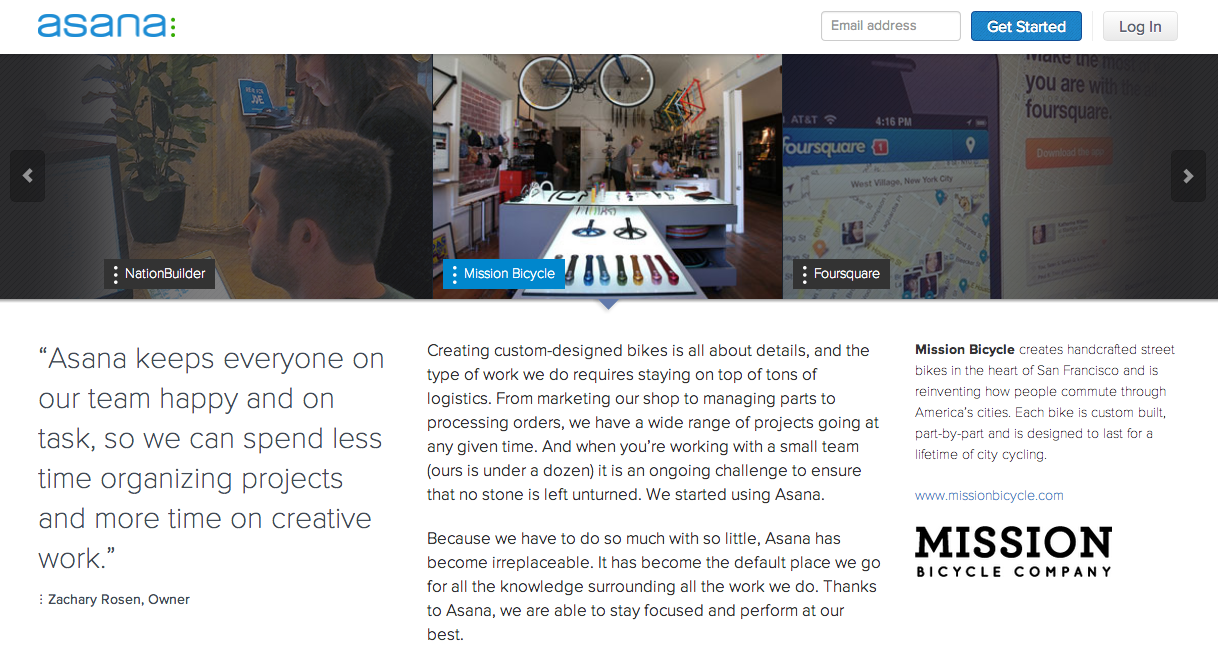
Instead, she encourages you to think about the personality of your audience and consider what would resonate with them most. Here are three alternatives she recommends:
Feature-story format - Employ journalism techniques such as a strong lead sentence or opening paragraph, and descriptive subheads as it moves along. "Because stories are written more like journalism pieces, they may more effectively catch the attention of editors at your targeted publications," she says.
First or second person - Best used where individuals or consumers are the audience, rather than business, this type of case study presents stories from the perspective of the customer, speaking in either first or second person, in "I" or "we" terms.
Q & A - "This often works best with serious technology audiences that tend to be distrustful of anyone but their peers," Hibbard writes. It could also be a plus for organizations with little time to invest in case studies as this type of content is fairly simple to produce.
6. Categorize your content
"Make sure each case study is tagged within a certain category—like industry or company size, for example—so that when prospects come to your site, they can easily find a case study that speaks to their needs," Sorenson recommends on the HubSpot blog. (See the "Label the Customer" top below)
7. Offer a bite, snack and meal
Weil encourages using "The Bite, The Snack, And The Meal" technique, an approach she learned from E-Write Online.
"In other words, consider writing a case study in several levels," she says. "The top one is your signpost subheads with a summary blurb under each. Readers who want to know more can click through to a complete version that goes into more detail."
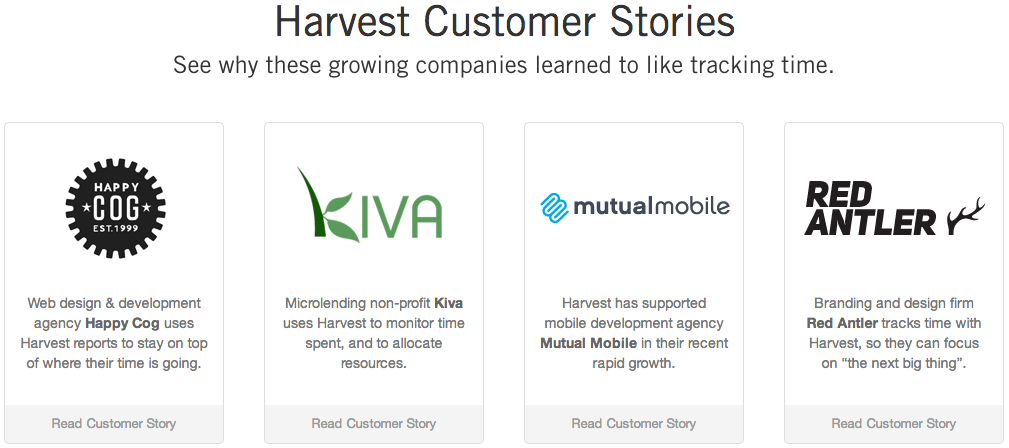
8. Use scroll-stopping headlines
Eye-catching headlines aren't only for your blog posts, they should be used on your case studies page, too.
"Unless your client's name is so well known that the nature of their problem and your solution could be discerned by the sort of person you want as a client simply by hearing it, go for client-agnostic titles," says Christopher Butler of web development firm Newfangled.
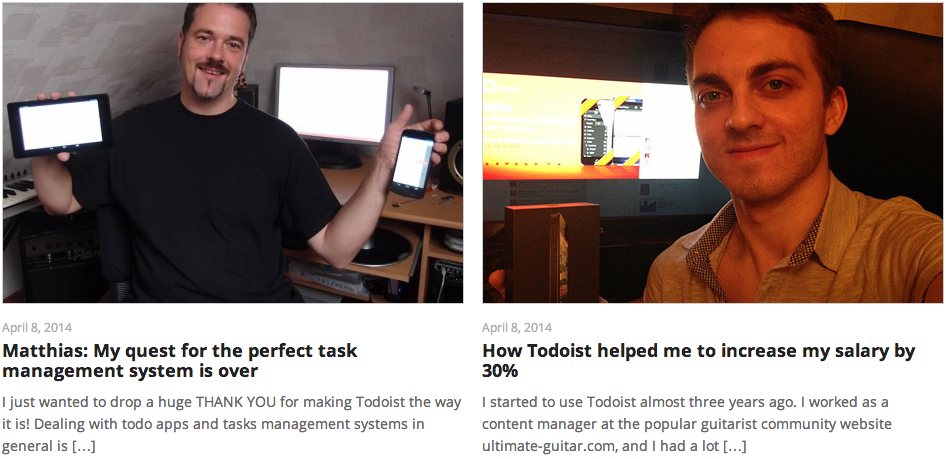
"Something like, 'Launching a Worldwide Campaign to End Hunger,' rather than 'We Worked With UNICEF,'" he offers as an example. "The idea is to make the case study a mirror for your prospect."
The customer
9. Select the best spokesperson
Selecting what type of customer—marketer, small business owner or data scientist—to profile is a major task in itself, one that involves first understanding who will pay for your product. This post won't attempt to tackle this part of the case study writing process, but I encourage you to read Hibbard's ebook, Making Your Customer Success Stories Work for You, which outlines this initial task in detail.
If you've already selected what type of customer you're profiling, be sure to heed Hibbard's next advice, too: interview the best spokesperson(s).
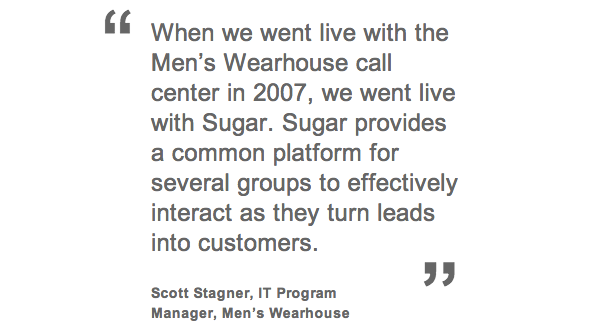
"Who is the decision-maker regarding your products or services—someone in IT, someone in an executive or business role, or both?" She poses in her ebook. "The individuals you interview for your case studies should match the decision-maker or audience you are trying to reach."
10. Pull in interested customers
Your next task is to get that customer's attention and have them agree to spending one to two hours on the phone with you, telling you how they use your product and reporting the results they've experience.
At Zapier, we send out an automated email invitation every Wednesday asking customers who meet a certain app usage condition to participate in a case study. In the plain-text email, the customer is asked to fill out a short form with questions such as, "What results have you seen since using Zapier?" After the customer clicks "Submit," their answers are added to our editorial calendar in [Trello](http://trello.com/—automation handled with a Zap—where we assess if their Zapier use case and success would make for a good case study.
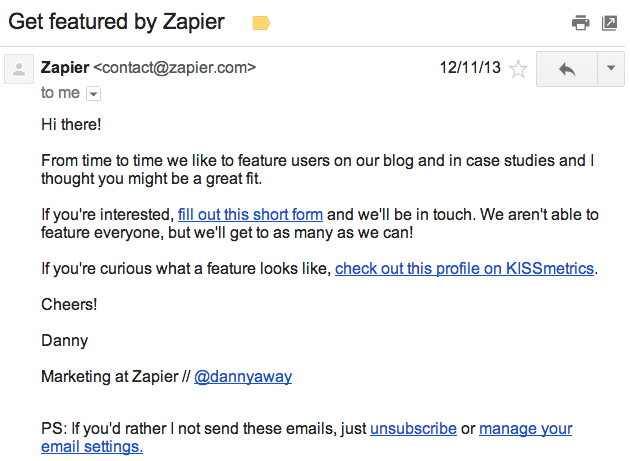
Since implementing this automated request and retrieval process in December, more than 150 customers have submitted their stories for case studies. If you don't have the tech team to configure a custom drip campaign to customers, check out products like Intercom, Vero and Customer.io.
Another method to build a list of case study candidates is to offer incentives, both to customers themselves and your sales team.
"Say, 'If you're willing to share your story, you're going to be featured in all these places and get a lot of exposure," Hibbard told Gordon Graham of ThatWhitePaperGuy.com. Hibbard, who runs a case study consultancy, encourages leaning on your salespeople, too.
"One software company I work with offers pretty good cash incentives and they get a fair number of ideas submitted," said Hibbard. "And then if the story winds up getting published, the sales rep get $1,000."
If your sales team is making the asking, Graham says of Hibbard's advice, identify the appropriate times to make the ask, such as around a sales meeting or during a traditionally slow quote.
Other methods, such as offering an award for the best use of your product, are present, too. A second way that's employed at Zapier is saving favorited tweets to a Google Doc and then reviewing those tweets later, searching for customers who could be well-positions for a case study. This process is easy to implement as saving favorited tweets can be automated with a Zap.
11. Supply a "leave-behind doc"
After a customer's initial interest in case study participation, Hibbard recommends sending the person a "leave-behind" doc. This attachment outlines these five items:
What are you asking for?
What’s involved?
How will it be used?
What’s in it for them?
Questions and next steps
12. Present an approval form upfront
Hibbard also recommends supplying your customer the final approval form to use the case study upfront, Graham shared.

"If you flesh out the process at the beginning, that can really help," she says. "Ask, 'Who is going to approve this and sign off?' Talk to the legal team and show them, 'This is the release form, this is a sample we did for another company, this is how it's going to be used.'"
Sharing this approval form before taking up one to two hours of their and your time will be beneficial to both parties. And it'll make sure when the time comes to have their PR and possibly legal team sign-off, there are no surprises.
13. Avoid the "blind" customer case studies
If approval isn't given, then you should scrap the case study. Really, that's what needs to be done says marketing consultant John Spindler.
"Case studies are all about building credibility. Readers want to see how you helped real people in real companies solve real business problems," Spindler writes on his blog. "As they read, they visualize themselves in the success story and anticipate how you can solve their problems as well.
"But if they can’t identify with the featured company or its business situation, they won’t have confidence in your claims. Which undermines your credibility," he writes.
Stuck with a customer case study you can't share? Check out Hibbard's blog post, The Ugly Duckling of Case Studies – The "Not-for-Public-Use" story, for how to make the most of it.
14. Label the customer
"Even when given an artificial connection, people tend to take action in order to maintain a consistent image if they are labeled as being apart of a group," Gregory Ciotti, the marketing strategist a Help Scout, wrote on Copyblogger.
His encouragement comes from a study in which half of the participants were told they were more likely to vote since they had been deemed politically active, and the other half weren't told anything. Though this label was, in reality randomly handed out, those who received it had a 15 percent higher turnout than the other group.
"We enjoy being consistent so much that if we feel apart of a group by being told that we are, it’s still likely to affect our response," Ciotti writes. "For instance, smart people are obviously going to be interested in an internet marketing course that’s made for smart people, right? The label is at work to make you realize you’re part of a desirable group."
The solution
15. Share specifics
Instead of saying, "our online marketing services led to these results," be specific about your product or service, Kristi Hines, a blog marketing professional, encourages on the Kissmetrics blog.
"You should say 'it was a combination of a three-month dedicated social media campaign focusing on Facebook and YouTube and five months of link building that led to an increase in rankings plus brand exposure that led to these results,'" Hines writes.
16. Give credit to other companies, too
Though it'd be impressive if your product solved the customer's problem 100 percent of the way, it's not likely the case. Don't hide that fact, journalist Erik Sherman writes on the National Center for the Middle Market website.

"Any time you're undertaking a marketing project, the temptation is strong to make things look as positive as you can. It's an understandable impulse, but you need some basic honesty in a piece like this," Sherman writes. "For example, if another company had a major role in solving the problem, you include it. Never pretend to have done more than you did."
17. Avoid marketing speak
"Don’t use too many marketing phrases or clichéd product explanations," says Clare Dodd of Articulate Marketing. "Keep it human, but make sure you are referring to products correctly, and types of implementation or acquisition in the right way."
The benefits
18. Use real numbers
Instead of ambiguous phrases like "cut time in half," Hines calls for using real numbers in case studies.
"Have you ever read case studies where a business states that they 'doubled traffic' for the customer in their case study and wondered if that meant they went from 100 to 200 visits or 10,000 to 20,000 visits?" Hines offers as an example. Make the "clear as day," she says.
19. Include "average" alongside "grand slam"
"Treat people as if they're intelligent and you will have a better chance of selling them," says Scott Gerber, founder of the Young Entrepreneur Council, in his Inc.com segment "Ask Gerber".
"If you just go at them and say, 'Look at this one in a million result, that we received from one of our clients in the history of our company,' but have since not been able to deliver that exact same results, guess what: the only big loser in the room will be your pitch," he says.

When presenting a case study, show what you product has done on average for your range of clients. Of course, he admits, it's OK to brag a little about your home run, but don't deceive them into thinking it's the only result of using your product.
20. Know it's not always a number
KPI. KPI. KPI. If that's on your mind, you're on track. But that's not all you should be keeping an eye out for from the customer's use of your product.
Not all impressive results come in number form, says Sorenson on the HubSpot blog.
"Maybe your customer was able to open a new location because of you, or do more work with less staff. If the end result is impressive and you know your prospects might find these results important, share them through direct quotes that you visually call out within the case study content," she write.
On her blog, Hibbard uses the example of a Twitter customer story that showed how a tweet helped saved a man's life. No KPI needed there.

"After all, it’s really about the power of story, and an anecdote packs the power of story in a small package," she writes.
In her interviews, Hibbard says she likes to ask the following question to possibly pull out an anecdote result: "Can you think of a specific time or example where the solution made a difference for you?"
21. Get customer quotes
Customer quotes are essential to a case study, used both in the copy and for marketing purposes. Here are the three key type of quotes recommended by Hibbard on her blog:
- Challenge/Pain – Show the pain or challenge the customer faced before the solution came along. Here’s your chance to get in some emotion related to the customer’s challenge. - Decision – Feature a quote that speaks to why the customer chose the solution – a great opportunity to call out your competitive differentiators. - Benefit – Choose a comment that speaks to the main benefit or benefits the customer experienced. This could then be the quote that you pull out to highlight in other marketing collateral.
22. Don't ruin customer quotes
"Be careful not to dumb (quote) down so they sound generic," McLellan says on his blog.
In the same vein, on Articulate's company blog "Bad Language," the marketing firm warns against using what it calls "frankenquotes", These are PR-written quotes "made up of spare body parts sewn together," explains Articulate CEO Matthew Stibbe.
"It is best to use short, snappy quotes, dotted throughout the case study that underline or explain one of your bullet points," Stibbe says. "It will be clear from your transcript which words are better left as they are."
23. Offer customer contact information
Another way to make sure your customer is fully onboard and to solidify your case study of their results as factual is to include their contact information.
"This would allow your prospects to independently verify their stories, do their own diligence," says Gerber on Inc.com. "It shows your brand as confident and willing to put your customers in the hands of new prospects because you're that confident in your brand's ability to deliver.
Put the case studies to use
24. Offer variety of media files
"Make sure that your case study and your various sales marketing materials are available for download or in a convenient place online or within mobile apps or other such platforms that your prospects are connecting with," encourages Gerber in his video segment.
25. Repurpose the case study
So far, this post has only covered written case studies, but there's far more that can be done. Just as you're able to turn a blog post into other pieces of content, so too can you turn a case study into a video, infographic or SlideShare presentation.
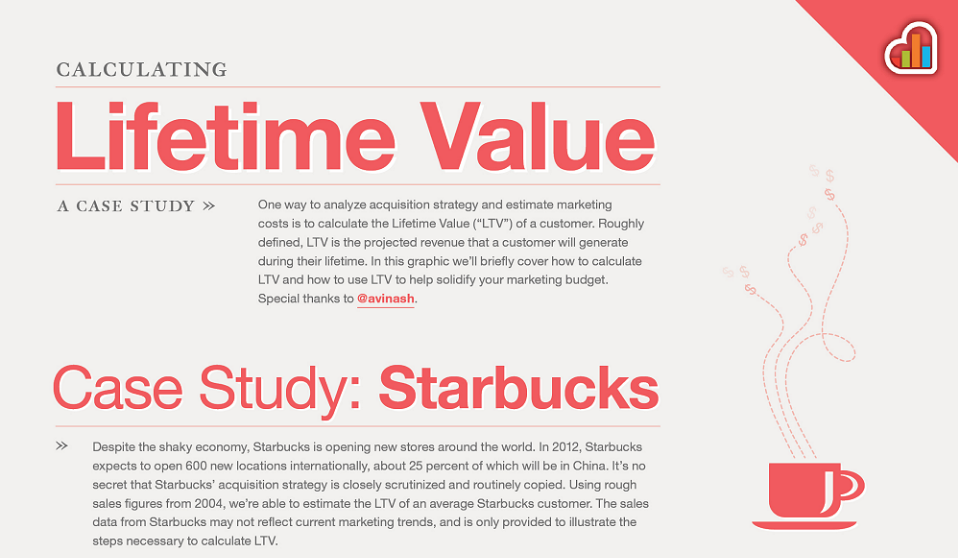
"The bonus with YouTube videos and infographics is that they are easy to share," Hines wrote on the Kissmetrics blog. "This means that your case study may go further than just your own site, leading to more of your potential customers finding out how they could benefit from your products or services."
Here are seven more ways to repurpose a case study:
Submitted to outlet, blog or another company as a guest post or article
Run on your company blog or publish in your newsletter
Repackage as a press release
Feature in user onboarding
Include in drip campaign
Make it an example in a white paper
Present it in a talk at a conference
Market your case studies
Beyond writing and re-purposing your case studies, comes marketing. This post won't extend into this part of the process, but I do recommend these two posts for a bit of inspiration:
"Customer Testimonials: 25 Ways to Boost your Marketing (w/ examples & best practices", Anupam Bonanthaya, CustomerRivet
"This Case Study Trend is HUGE", Casey Hibbard
"150+ of the Best Case Study Examples for B2B Product Marketers", by John-Henry Scherck
Here are two Zaps that help some companies ease the workload of case study marketing with Zapier automation.
What's worked best for you?
Do you have a case study tip to share? Whether its on your process, writing style or marketing practices, we'd love to hear about it in the comments below.
Sources
Listed in order of mention
B2B Small Business Content Marketing: 2014 Benchmarks, Budgets, and Trends — North America, Content Marketing Institute
"Top tips to write a persuasive case study", Debbie Weil
"How Content Length Affects Rankings and Conversions", Neil Patel
"The Ultimate Guide to Creating Compelling Case Studies", Lauren Sorenson for HubSpot
"4 tips for writing a strong case study", Drew McLellan
"Writing Case Studies: The Element of Story", Sid Smith
"6 Tips to Make a Case Study Work for Your Company", Erik Sherman for The National Center for the Middle Market
"Part II: Writing a successful case study", Steve Slaunwhite
The 10 Biggest Mistakes Case Study Writers Make, Casey Hibbard
"Rethinking the Case Study", Christopher Butler, Newfangled
Making Your Customer Success Stories Work for You, Casey Hibbard
"How to get the best bang from your case study buck", Gordon Graham
"The "Leave-Behind" Doc for Asking Customers for Case Studies", Casey Hibbard
"Avoid Writing "Blind" Customer Case Studies", John Spindler
"7 Social Psychology Studies to Help You Convert Prospects into Paying Customers", Gregory Ciotti for Copyblogger
"8 Tips For Creating a Great Case Study", Kristi Hines for Kissmetrics
"Ten commandments for compelling case studies", Clare Dodd, Articulate Marketing
"Create Effective Case Studies", Scott Gerber for Inc.om
"Case Studies: When Measurable Results AREN’T Necessary", Casey Hibbard
"Customer Quotes That Compel and Sell in Case Studies" - Casey Hibbard
You might also enjoy this article: "11 Ways to Win Your Customers' Hearts with Humor"
Credits: Woman in restaurant photo courtesy Plantronics Germany via Flickr. Cover of Aesop's Fables by Delana Bettoli. Photo of Steve Slaunwhite from Twitter. Casey Hibbard photo from Twitter. Approved photo courtesy Daniel Kulinski. Baseball photo courtesy clappstar on Flickr.



